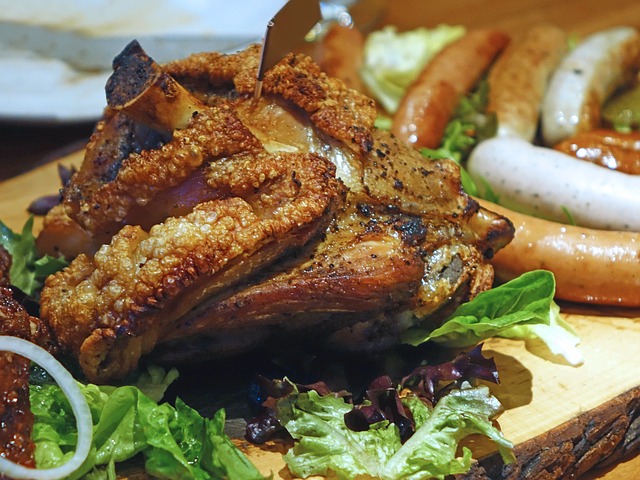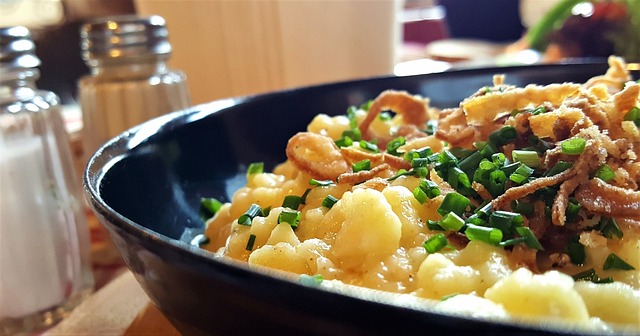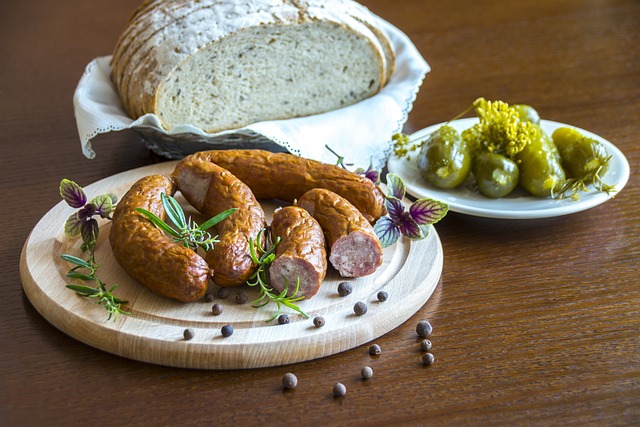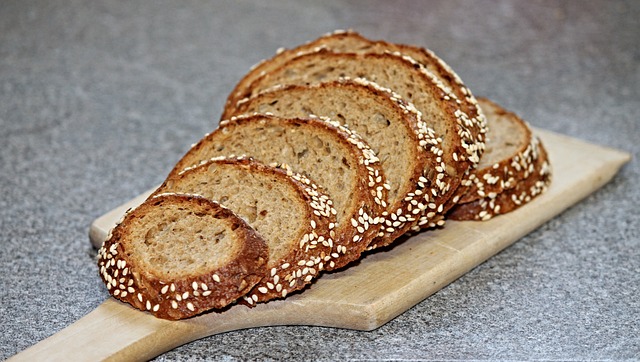What to eat in Germany in 2023: Our round up of the most traditional and popular German food.

If you’re planning a trip to Munich, Berlin or Frankfurt you might want to start writing a list of what to eat in Germany. Trust me, there’s a lot you won’t want to miss.
Some might sum up German cuisine as Wurst and Sauerkraut. And while it’s a popular food at Oktoberfest, there is more to Germany than meat and cabbage.
If you’re only interested in finding out what Germans eat for lunch, click on the links below to skip ahead.
The History of German Cuisine
Before we get started on the top ten foods to try in Germany. Let’s take a look at the history of Germany’s cuisine.
The geography of Germany has shaped the cuisine. Much of the country is landlocked and this was reflected in the lack of variety in the Germany cooking historically.
Pickling has always been an important way to preserve food. Preserving the vital nutrients from meat and vegetables during the cold, hard winters. Which explains why pickled fish and vegetables are popular in German cuisine, and still to this day. Matjes, sauerkraut and gherkins are a great example of this.
Speaking of pickled fish… A fish sandwich that must be tried is pickled fish in a fresh bread roll, called a Fischbrötchen or Matjesbrötchen. It’s a popular snack to eat on the go in Germany.

Regional Differences in German Cuisine
What to eat in Germany depends largely on where you are visiting. There are strong regional differences depending on the geography of the area. Germany is surrounded by nine different countries as well as the North Sea and Baltic Sea to the north.
The surrounding countries have also had a strong influence on the food in areas across Germany. For example, the states of Saxony and Brandenburg have shared food traditions with the western part of Poland, thanks to the Slavonic roots.
The western state of Saarland has been heavily influenced by the French cuisine. A typical dish in Saarland is Dibbelabbes – a potato hash made with raw grated potato, onion and meat. And what about Bibbelsches Bohnesupp? A green bean and bacon soup. Not so dissimilar from a Soupe aux Haricots Verts, right?
What do Germans eat for breakfast?
Muesli, cereals, porridge and toast are commonly found on the breakfast table in Germany. During the week, that is. At the weekends, bread, or more specifically bread rolls are the order of the day. Families breakfast together in Germany. And they usually eat very similarly across the country.
Someone will head out early-ish on a Saturday to buy bread rolls for the family. In southern Germany, there might be a mix of bread rolls and pretzels on offer on the table. The rolls are served with preserves, jellies, Nutella, honey and butter, as well as the typical savoury options of sliced cheeses and cured meats.
When you hear the words “Continental Breakfast” this makes up a big part of that hotel mainstay.
What do Germans eat for lunch?
The main meal is traditionally eaten during the day. Although, this is steadily changing as more families want to eat a hot meal together after school and work.
So what do Germans eat for lunch? There are regional differences as with all countries. In the south of Germany, traditional German dishes are influenced by the southern neighbours. A German-style pasta called spaetzle (little sparrows in English) is used in a lot of meals such as Linsen mit Spaetzle (lentils with little pasta dumplings).
If you’re in Germany for work and your office has a canteen, make sure you join your colleagues for lunch. The office canteen in Germany is worth a visit, not just to see what Germans eat for lunch. It’s often subsidised so it’s a cheap, hot meal.

Top of your list of what to eat in Germany should be these favourites:
We’ve put together this list of German lunch dishes that you might want to try when visiting a traditional German restaurant – of which there are many!
Königsberger Klopse
Veal meatballs made with anchovies served in a sauce made of capers, egg yolk and white wine. Königsberger Klopse are served alongside boiled potatoes and beetroot.
This dish is popular in the former German Democratic Republic, where they are often known as Kochklopse. It is considered to be East Prussian cuisine. The former German city of Königsberg, after which the meatballs are named, is now a part of Russia and now known, of course, as Kaliningrad.
Schweinebraten mit Kohl
A typical Sunday lunch may include this pork dish. Literally translated as braised pork roast and usually served with cabbage and perhaps potatoes or dumplings. It is served in beer halls in Bavaria, so look out for it on the menu.
Maultaschen
The German equivalent of Italy’s ravioli. The pasta parcel contains spinach and sausage meat. It is a little larger than your typical ravioli and it’s stuffed to the brim.
Maultaschen originates from the southern state of Baden-Württemberg. The story goes that it was created by the monks in Maulbronn to be eaten during lent. The pasta covering the meat filling meant that God couldn’t see that they were eating meat when they should have been fasting.
The word Maultaschen literally translates into English as “mouth bags”.
Maultaschen is often found on menus in restaurants in and around Stuttgart. They could be served whole in a broth, sliced and fried with onions and scrambled eggs, or braised and covered in a sauce.
In Baden-Württemberg, the main producer of Maultaschen (Burger) has expanded their range and now offers vegetarian and vegan alternatives to the original Maultaschen. If you are vegan and not sure what to eat in Germany, check out the refrigerated section of your closest supermarket and you might just find some vegan “mouth bags”.
Wurst
You probably googled “what do people eat in Germany” and thought you’d ended up on a page about German food with no mention of sausages. Stop that negative thinking right there!
Sausages in Germany are as varied as the bread assortment. Some regions are world famous for their wurst. Nuremberg has the chipolata style sausages called Nuernberger Rostbratwurst. Rheinland-Pfalz has the Pfälzer Bratwurst. Niedersachsen has the Göttinger Stracke.
If you’re interested in reading more about the regional wurst, visit this website dedicated to German sausages and meat products.
What people eat in Germany will depend on their region to some extent but some wurst are popular nationwide. Many regions have their own take on Bratwurst. The bratwurst from Franconia are 10 – 20 cm long. The Thueringer Rostbratwurst are slightly spicy and are 15 – 20 cm long.
Eitherway, Germany lives up to the stereotype here. They do love their sausages.
Beef Rouladen with Braised Red Cabbage (Rinderroulade mit Rotkohl)
This is the ultimate luxury food. If you’re looking to impress someone, look up the recipe for Beef Rouladen. Thin strips of beef (topside, rump, or silverside works well) are spread with mustard before being rolled up with bacon, onions and a mini gherkin. The rolls are then fried and braised in a stock which is turned into a rich gravy.
This is decadent German food. If you were asking what do people eat in Germany for Christmas, this might be the answer for some.
Served with a gravy alongside potatoes – mashed, boiled, dumplings, however the host likes them. The side dishes differ from region to region. Some areas serve red cabbage braised in festive spices, others serve sauerkraut. And some think the meal’s just fine without it.
Linsen mit Spaetzle (lentils with pasta dumplings)
This is a southern German dish. Although it is often served with one or two wurst similar to a Frankfurter, it can be a good choice if you are vegan. Just ask for the meal without the sausage and check the lentils haven’t been cooked with bacon.
Spaetzle is a German-style pasta made of a loose dough dropped into a pan of boiling water. It cooks in seconds. Spaetzle is native to Swabia in Baden-Württemberg but popular across the south of Germany.
Lentils are cooked with onions and carrots to form a type of stew/sauce. Some recipes add spices to the lentils to make it similar to a lentil curry.
Vegetarians in Germany
If you are a vegetarian visiting Germany, check out our post on where to find vegetarian and vegan food in Germany.

What do people eat in Germany for their evening meal?
Abendbrot is the traditional German evening meal that is still eaten up and down the country. It might be easy to prepare but that doesn’t mean its quickly gobbled down. Families make an effort to gather together to eat their dinner and chat about the day.
Abendbrot is a traditional meal has its origins in the Weimar Republic. A time when farmers started heading into factories for work. Canteens provided a warm meal during the day and the work was less laborious. There was no need for a second warm meal. Bread sufficed.
So what is Abendbrot?
Sliced bread from a bakery is served with cuts of cured meat, Leberwurst (spreadable liver similar to pate), slices of cheese, cream cheese, along with pickled and fresh vegetables. From this you create open sandwiches.

What type of bread is eaten for Abendbrot?
Germany is the land of bread varieties. There’s plenty of choice available at a discounter supermarket. But if you really want to be spoilt for choice, head to a bakery. Sourdough, rye, multigrain to name just a few of the loaves. And not forgetting the rolls, baguettes and various pretzels.
Typically loaves of bread are sliced at home to keep it fresh. Although it’s possible to ask the bakery to slice your bread for you. Or if you’re buying a loaf of bread from the supermarket, there is a machine for you to slice it with. The machine looks and sounds menacing but as long as you follow the instructions you’ll survive.
Germany loves brown bread, but you might be interested to know that this wasn’t always the case. Years ago white bread was considered the bread of those who could afford it. Brown bread was made with the leftover wholegrain wheat flour meaning poorer families tended to have to eat brown bread.
Fun fact about what German people eat…
Unusually for Anglo-Saxon kitchens, nearly every German kitchen will have a bread slicer. Some of these bread slicers look down-right dangerous. And others look like they could be straight from the 1800s. These bread slicers are used daily and will often be included into the design of the kitchen. It’s considered an essential.
So what do people eat in Germany for their evening meal – it’s simple, it’s bread!
Do you feel like something is missing off the list? Get in touch!
Have you got first-hand experience of visiting or living in Germany and feel like something is missing off this list? Let us know the comments below, we’d love to hear from you.

Leave a Reply